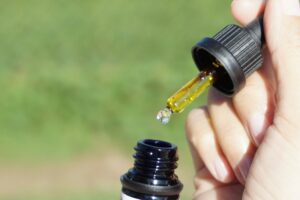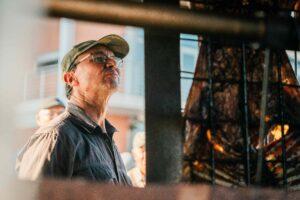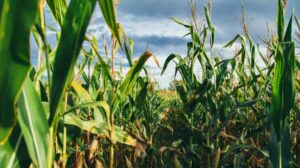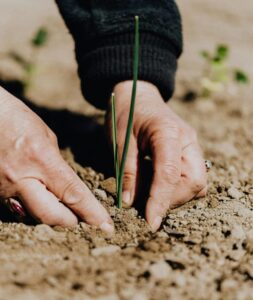Introduction
The Convention on Biological Diversity (CBD) defines biotechnology as: “any technological application that uses biological systems, living organisms, or derivatives thereof, to make or modify products or processes for specific use”.
These technologies are applied in crops, forestry, livestock and aquaculture, and in food processing.
They are used for many different purposes, such as the genetic improvement of plants and animals to increase their yields or efficiency; characterisation and conservation of genetic resources for food and agriculture; plant and animal disease diagnosis; vaccine development; and production of fermented foods.
Source: www.fao.org/biotechnology/en/ (adapted)
Biotechnology in agriculture-related sectors
The publication, Biotechnologies for Agricultural Development, which can be downloaded at www.fao.org, discusses the following points in detail. The notes below are taken from that publication.
Biotechnology in crops
Biotechnologies used for crops include tissue culture based techniques (such as micropropagation), mutagenesis (the use of agents like chemicals or radiation to modify DNA), interspecific or intergeneric hybridisation, genetic modification, marker-assisted selection (MAS), disease diagnostics and bioprotection, and biofertilisation.
It is important to underline that biotechnology can assist and expand, but not substitute, traditional plant breeding programmes. The presence of skilled personnel and adequate facilities for the identification of appropriate parents and segregating materials, as well as the selection of improved lines for their stabilisation and agronomic assessment, are essential. Even countries that decide to rely on research results obtained abroad, for instance in neighbouring countries with similar ecological conditions, need capacities for the evaluation, adaptation and adoption of improved lines developed elsewhere. Investments in biotechnology infrastructures and human capacities cannot therefore be made at the expense of conventional breeding or agronomic research and strong breeding programmes must remain at the core of crop improvement.
Source: Biotechnologies for Agricultural Development, p 28
Biotechnology in livestock
Artificial insemination (AI), Embryo Transfer (ET) and use of molecular markers is the focus. A wide range of biotechnologies are available and have already been used in developing countries in the main animal science disciplines, i.e. animal reproduction, genetics and breeding; animal nutrition and production; and animal health.
In animal reproduction, genetics and breeding, artificial insemination (AI) has perhaps been the most widely applied animal biotechnology, particularly in combination with cryopreservation, allowing significant genetic improvement for productivity as well as the global dissemination of selected male germplasm. Complementary technologies such as monitoring reproductive hormones, oestrus synchronization and semen sexing can improve the efficiency of AI. Embryo transfer provides the same opportunities for females, albeit on a much smaller scale and at a much greater price. Molecular DNA markers can also be used for genetic improvement through marker-assisted selection (MAS) as well as to characterise and conserve animal genetic resources. [p 123]
Biotechnologies for Agricultural Development identifies and looks at the following:
- Artificial insemination
- Sperm sexing
- Progesterone monitoring
- Oestrus synchronization
- Embryo transfer
- Embryo sexing
- In vitro fertilization (IVF)
- Cryopreservation
- Cloning
- Recombinant DNA technology
- Molecular markers
Products from biotechnological processes are added to animal feeds e.g. nutrients, enzymes, probiotics and prebiotics. Biotechnology also advances measures to benefit e.g. sterile insect technique (SIT) to counter insects like tsetse fly which cause livestock disease.
Biotechnology in forestry
The focus is on micropropagation. Micropropagation includes somatic embryogenesis (SE), a tissue culture technique. Other biotechnologies include molecular markers and quantitative trait locus (QTL) analyses, whole genome sequencing and functional genomics. The more sophisticated group of biotechnologies includes backward and reverse genomics approaches, whole-genome sequencing, low-cost vegetative propagation and genetic modification of forest trees. Biofertilisers and biopesticides also play a part. [p79]
Biotechnology in aquaculture
The four main areas where biotechnologies have been used in aquaculture and fisheries include genetic improvement and control of reproduction; biosecurity and disease control; environmental management and bioremediation; and biodiversity conservation and fisheries management.
Biotechnology in food processing
Biotechnology makes use of microbial inoculants to enhance properties such as the taste, aroma, shelf-life, texture and nutritional value of foods through fermentation which is also widely applied to produce microbial cultures, enzymes, flavours, fragrances, food additives and a range of other high value-added products.
International business environment
- African Agricultural Technology Foundation – http://aatf-africa.org
- African Biological Safety Association (AfBSA) – www.afbsa.africa
- African Biosafety Network of Expertise (ABNE) – http://nepad-abne.net/
- AgriForest Bio-Technologies – www.agriforestbiotech.com
- AquaBounty Technologies, genetically engineered salmon – https://aquabounty.com
- BGI creates cloned pigs – www.genomics.cn
- Biosafety Clearing-House (BCH) – http://bch.cbd.int
- Bioversity International – www.bioversityinternational.org
- Boyalife Group – https://boyalife.com
- Consejo Nacional de Ciencia y Tecnología (CONACYT) – www.conacyt.gov.py
- Comisión Intersecretarial de Bioseguridad y Organismo Genéticamente Modificados (CIBIOGEM) – https://conacyt.mx/cibiogem
- Consultative Group on International Agricultural Research (CGIAR) – www.cgiar.org
- CropLife International – http://croplife.org Find the “Plant Biotechnology” menu option
- European South African Science and Technology Advancement Programme (ESASTAP), an initiative of South African Department of Science and Technology’s Programme for International Co-operation and Resources – https://esastap.org.za
- Read about the Food and Agriculture Organisation (FAO) says about biotechnology at www.fao.org/biotechnology/en/
- The Global Crop Diversity Trust – www.croptrust.org
- Global Forum on Agricultural Research (GFAR) – www.gfar.net
- www.grain.org – website of Genetic Resources Action International (GRAIN)
- GMO Free USA – https://gmofreeusa.org
- Instituto Nacional de Investigaciones Forestales, Agricolas y Pecuarias (INIFAP) – www.gob.mx/inifap
- International Centre for Genetic Engineering and Biotechnology (ICGEB) – www.icgeb.org
- International Service for the Acquisition of Agri-Biotech Applications (ISAAA) – www.isaaa.org
- The Global Crop Diversity Trust – www.croptrust.org
- Okanagan Specialty Fruits, the first GMO apples – https://okspecialtyfruits.com
- Southern Africa Network for Biosciences (SANBio) – www.csir.co.za/nepad-sanbio
- Union for the International Protection of New Varieties of Plants (UPOV) – www.upov.int
- The United Nations Education, Scientific and Cultural Organisation (UNESCO) – www.unesco.org
- World Health Organisation (WHO) http://who.int/topics/food_genetically_modified/en/
INTERNATIONAL GENEBANKS
- SADC Plant Genetic Resources Centre (SPGRC) – www.spgrc.org.zm
- Genesys – www.genesys-pgr.org
Centres supported by the Consultative Group on International Agricultural Research (CGIAR) operate genebanks containing more than 650 000 samples of staple crops and related wild species. Those materials include traditional varieties developed through many generations of selection by farmers, as well as wild species, crop breeding lines and improved varieties. See www.cgiar.org/research/research-centers. Some of these are listed below.
| Centre and website | Genebank |
| Africa Rice Centre (WARDA) www.africarice.org | Rice |
| International Centre for Tropical Agriculture (CIAT) – https://ciat.cgiar.org | Beans, cassava, forages |
| Center for International Forestry Research (CIFOR) – www.cifor.org | Forestry |
| International Maize and Wheat Improvement Centre (CIMMYT) www.cimmyt.org | Maize, rye, triticale, wheat |
| International Potato Centre (CIP) https://cipotato.org | Andean roots and tubers, potato, sweetpotato |
| International Centre for Agricultural Research in the Dry Areas (ICARDA) www.icarda.org | Barley, chickpea, faba bean, forage, lentil, wheat |
| World Agroforestry Centre www.worldagroforestry.org | Forestry |
| International Crops Research Institute for the Semi-Arid Tropics (ICRISAT) www.icrisat.org | Chickpea, groundnut, pearl millet and other millets, pigeonpea, sorghum |
| International Institute for Tropical Agriculture (IITA) – www.iita.org | Bambara groundnut, cassava, cowpea, soybean, yam |
| International Livestock Research Institute www.ilri.org | Forages |
| International Rice Research Institute (IRRI) http://irri.org | Rice |
FURTHER REFERENCE:
- Find global statistics at www.isaaa.org, website of International Service for the Acquisition of Agri-Biotech Applications.
- Read about the International Treaty on Plant Genetic Resources for Food and Agriculture at www.fao.org/plant-treaty/en.
- Information about the Nagoya Protocol is available at www.cbd.int/abs/about/. The latter “provides a transparent legal framework for … the fair and equitable sharing of benefits arising out of the utilization of genetic resources”.
- To read about the Cartagena Protocol on Biosafety, an international agreement to regulate the transboundary movements of genetically engineered organisms, go to https://bch.cbd.int/protocol.
- Find the USDA Agricultural Biotechnology reports on different countries, including the one on South Africa (2022, November).
- Find the article by Wandile Sihlobo (Agbiz) under “Websites & publications” (last heading) which argues that institutional limitations are a greater impediment to the acceptance of biotech crops in Africa than a belief that they pose health problems.
Local business environment
GMO maize, soybean and cotton are approved and well established in commercial production in South Africa. The annual report of the South African National Seed Organisation (SANSOR) includes a Gentically Modified Seed chapter. This captures the developments and sales relevant to this sector. Find it at www.sansor.org.
GMO – a need for rapid testing
GMO testing is a legislative requirement in the grain industry. Requirements of the Cartagena Protocol make it essential to test grain for GMO presence.
Two common methods are used for testing of GMO:
- Polymerase chain reaction (PCR): Molecular DNA test which detects certain DNA sequences in ground grain samples. This method is performed in a laboratory and requires trained personnel. The method takes several hours to complete and cost per analysis is high.
- Immunoassay: This method makes us of specific antibodies to detect specific proteins expressed by the gene involved in the GMO technology. It is usually in the form of a flow lateral flow strip, and can be performed at the grain facility. Minimal training is required. This is a rapid test, completed in 5 minutes and cost per analysis is low.
Studies have shown that the lateral flow strip shows excellent is ideal for screening throughout the supply chain, from the field to the silo and every step in between, and all this while maintaining a relatively accurate result.
While polymerase chain reaction (PCR) is considered as the “gold standard” for certifying non-GMO maize for export; It is not always feasible to perform PCR at every stage of the supply chain because it of time and cost constraints.
During importation and exportation, grain needs to be tested at the harbours and borders to prevent GMO grain from entering a non-GMO area. Testing after arrival at a grain processors’ facility is important to pick up any contamination that could have occurred during loading and transportation.
In most cases this neglected, since the PCR techniques are not simple to perform and requires time which may not be available.
Most industry, farmers, and users requiring rapid results are moving toward Lateral flow devices. Results are available immediately and time is not wasted by waiting for laboratory results which can take days. The lateral flow devices help the grain move faster through the supply chain.
The greatest need of any industry is time, and Lateral Flow devices offer exactly this to the user. It is a growing trend, and the move toward Rapid GMO testing has enabled decisions on storage and transportation of product to be made quickly and accurately.
Source: Stargate Scientific. Visit them at www.stargatescientific.co.za.
National strategy and government contact
Education, innovation and training are covered in chapter 9 of the National Development Plan (NDP). Of interest to this article, plant cultivars is listed as one area in which SA research has been good.
In South Africa, plant breeders’ rights (PBR) are protected under the Plant Breeders’ Rights Act, 1976 (Act No.15 of 1976). Also of relevance are the Genetically Modified Organisms Act, 1997 (Act No.15 of 1997) and Plant Improvement Act, 1976 (Act No. 53 of 1976). An amendment of the latter is currently before parliament. Find copies of these acts at www.sansor.org/legislation. Of relevance to livestock is the Animal Improvement Act, 1998 (Act 62 of 1998).
Department of Agriculture
The Directorate Genetic Resources administers the Plant Breeders’ Rights (PBR) Act, Act No. 15 of 1976 as amended in 1996. The objective of this Act is to provide for a system through which intellectual property rights (plant breeders’ rights) relating to varieties of certain kinds of plants may be granted and registered.
Find details of the Directorate: Genetic Resources; Registrar: Plant Breeder Rights Act; Registrar for the Genetically Modified Organisms Act, 1997; and The Plant Genetic Resources Centre (PGRC) at www.nda.gov.za.
Department of Science, Technology and Innovation (DSTI) www.dsti.gov.za
- Agriculture is one of three sectors targeted by the DSTI’s Bio-Economy Strategy. Together with the Technology Innovation Agency (TIA) it has projects involving wheat, cassava, sweet stem sorghum, table grapes, indigenous flower bulbs, and more. Read about the TIA at www.tia.org.za. Download a copy of the Bio-Economy Strategy from the DSTI website or at www.gov.za.
- The DSI’s agency, the South African Agency for Science and Technology Advancement (SAASTA), runs a technology awareness campaign called the Public Understanding of Biotechnology (PUB). Visit www.saasta.ac.za and www.pub.ac.za.
- Biosafety SA http://biosafety.org.za.
Department of Forestry, Fisheries and the Environment www.dffe.gov.za
This Directorate: Biodiversity Risk Management was formed to co-ordinate and support work in implementing the Cartagena Protocol on Bio-safety.
- South African National Biodiversity Institute (SANBI) is legally mandated to monitor the impacts of GMOs in our environment. Visit www.sanbi.org.
The Department of Trade, Industry and Competition (the dtic) considers trade and industrial development issues. See www.thedtic.gov.za.
Department of Health (DOH) www.health.gov.za
The DoH, which has a Biotec unit, has responsibility for labelling and related legislation. According to the Consumer Protection Act, food containing more than 5% of a GM ingredient needs to be labelled.
Further reference:
Role players
View the Premium Listings below (scroll down or click on “Premium Listings” on the Table of Contents to the right).
Further reference:
Companies
- Also find the list of companies on the “Animal Improvement and breeders” page.
NGOs and industry bodies
- The Consumer Goods Council of South Africa is “an industry body representing over 12 000 member companies in the retail, wholesale, manufacturing within the Fast Moving Consumer Goods (FMCG) industry”. It is involved in negotiations around the GM labelling.
Training and research
- The PUB website contains a list of training providers and institutions in this area, along with possible careers in genetics and biotechnology. Visit www.pub.ac.za. Another place to find tertiary institutions is on the Southern Africa Plant Breeders’ Association website – https://sapba.co.za.
- The ARC horticultural and field crop research campuses do research, breeding new cultivars producing seed for cultivars developed in breeding projects. Find their details on the “Research and development” page.
- The AgriSETA Learner Guide Primary Agriculture “Explain the propagation of plants”, the Assessment Guide “Propagate plants”, and links to South African Qualifications Authority (SAQA)-accredited qualifications like “Manipulate plants” and “Demonstrate an understanding of plant propagation” can be found at www.agriseta.co.za.
- Private Companies conduct their own research.
Websites and publications
Visit the websites listed earlier on this page.
- Download the publication Biotechnologies for Agricultural Development from www.fao.org.
- Find the pages on biotechnology and GM at www.scidev.net
- Find the “Plant Biotechnology” option at https://croplife.co.za.
- Read the latest annual USDA report on biotechnology in South Africa on the Internet. The November 2024 one is at www.fas.usda.gov/data/south-africa-agricultural-biotechnology-annual-8.
- Find the quarterly South African Plant Variety Journal on the Directorate: Genetic Resources webpages at www.nda.gov.za.
- A number of publications are available from the Biotechnology Unit at the Department of Science and Innovation (DSI).
- Access the biotechnology cartoons commissioned by the DSI’s Public Understanding of Biotechnology (PUB) unit at www.pub.ac.za.
- An inventory of wild relatives to food crops has been compiled at www.cwrdiversity.org. This offers potential for plant breeders who could use genes to strengthen agricultural crops.
- Bayer’s pages on glyphosate are www.glyphosatelitigationfacts.com/main/ and www.bayer.com/en/glyphosate-roundup.aspx.
- www.actionbioscience.org – “Bringing biology to informed decision making”
- “Support GMOs and Golden Rice”, http://supportprecisionagriculture.org/
Some articles
- Moore C. 2025, March 13. “Tobacco’s hidden friendly side: how the controversial plant could be used for good”. The Conversation. Available at https://theconversation.com/tobaccos-hidden-friendly-side-how-the-controversial-plant-could-be-used-for-good-250683
- Naidoo D. 2024, November 15. “Supreme Court of Appeal blocks Monsanto’s GMO maize, citing flaws in government safety oversight”. IOL. Available at www.iol.co.za/business/supreme-court-of-appeal-blocks-monsantos-gmo-maize-citing-flaws-in-government-safety-oversight-648fb53b-0cee-4607-b062-284aa837636f
- Nakhooda M. 2024, November 3. “COP29: AI can help develop climate-resistant crops for Africa – but it shouldn’t be left in the hands of corporates”. The Conversation. Available at https://theconversation.com/cop29-ai-can-help-develop-climate-resistant-crops-for-africa-but-it-shouldnt-be-left-in-the-hands-of-corporates-241451
- Reporter. 2024, April. “The importance of gene editing policies in times of drought”. SACOTA Newsletter (07). Available at www.sacota.co.za/newsletter
- Chetty L. 2024, March 3. “Costs of inappropriately regulating all seed innovations as GMOs are too high for South Africa”. Daily Maverick. Available at www.dailymaverick.co.za/article/2024-03-03-costs-of-inappropriately-regulating-all-seed-innovations-as-gmos-are-too-high-for-south-africa/
- Sihlobo W. 2024, February 14. “An embrace of scientific advancements in seed breeding and agrochemicals is vital for SA’s agricultural progress”. Agbiz. Available at www.agbiz.co.za/document/open/an-embrace-of-scientific-advancements-in-seed-breeding-and-agrochemicals-is-vital
- Knowles M. 2023, November 6. “Seed breeders welcome landmark decision on EDVs”. FruitNet. Available at www.fruitnet.com/main-navigation/seed-breeders-welcome-landmark-decision-on-edvs/256885.article
- Idoko-Akoh A. 2023, November 2. “Bird flu could be eradicated by editing the genes of chickens – our study shows how”. The Conversation. Available at https://theconversation.com/bird-flu-could-be-eradicated-by-editing-the-genes-of-chickens-our-study-shows-how-216649
- Reporter. 2023, October 19. “Gene editing gives hope for permanent bird flu solution”. FairPlay. Available at https://fairplaymovement.org/gene-editing-gives-hope-for-permanent-bird-flu-solution/
- Pitzl A. 2023, May 11. “Meet Ginger the Calf: How gene-editing could change the livestock industry”. RED TV. Available at www.rfdtv.com/how-ginger-the-calf-could-change-the-livestock-industry
- Adenle A. 2023, July 5. “Genetically modified crops may be a solution to hunger – why there is scepticism in Africa”. The Conversation. Available at https://theconversation.com/genetically-modified-crops-may-be-a-solution-to-hunger-why-there-is-scepticism-in-africa-207364
- Oloo B. 2022, October 26. “Kenya has lifted its ban on genetically modified crops: the risks and opportunities”. The Conversation. Available at https://theconversation.com/kenya-has-lifted-its-ban-on-genetically-modified-crops-the-risks-and-opportunities-192636
- Refer to our blog “The South Africa new Plant Breeders’ Rights Act, and Draft Regulations published for Public Comment” (2022, September 28).
- Sihlobo W. 2022, July 31. “EU’s GE stance a signal for Africa to adjust policies”. Sunday Times. Available at www.agbiz.co.za/document/open/eus-ge-stance-a-signal-for-africa-to-adjust-policies
- Sihlobo W. 2022, June 16. “China to adopt genetically modified maize and soy: why it matters for South Africa”. The Conversation. Available at https://theconversation.com/china-to-adopt-genetically-modified-maize-and-soy-why-it-matters-for-south-africa-185013
- Muigai A., Djikeng A. & Echezona T. 2022, April 19.”Why African scientists are studying the genes of African species, and how they do it”. The Conversation. Available at https://theconversation.com/why-african-scientists-are-studying-the-genes-of-african-species-and-how-they-do-it-180881
- Henke J. 2022, January 27. “GMO VS. CRISPR”. Successful Farming. Available atwww.agriculture.com/podcast/successful-farming-radio-podcast/gmo-vs-crispr
- Daba T. 2020, December 9. “Why a new potato variety could be a game-changer for farmers in East Africa”. The Conversation. Available at https://theconversation.com/why-a-new-potato-variety-could-be-a-game-changer-for-farmers-in-east-africa-150801
- McKie R. 2020, June 14. “Lords seek to allow gene-editing in UK ‘to produce healthy, hardier crops’”. The Guardian. Available at www.theguardian.com/science/2020/jun/14/lords-seek-to-allow-gene-editing-in-uk-to-produce-healthy-hardier-crops
- Edgell D. 2019, October 7. “Gene editing needs to become more precise to live up to its promise”. The Conversation. Available at https://theconversation.com/gene-editing-needs-to-become-more-precise-to-live-up-to-its-promise-123845
- Botha L. 2019, September 11. “Gene editing: a precise approach to crop and animal breeding”. Farmer’s Weekly. Available at www.farmersweekly.co.za/agri-technology/farming-for-tomorrow/gene-editing-a-precise-approach-to-crop-and-animal-breeding/
- Neslen, A. 2018, July 25. “Gene-edited plants and animals are GM foods, EU court rules”. The Guardian. Available at www.theguardian.com/environment/2018/jul/25/gene-editing-is-gm-europes-highest-court-rules
- Devlin, H. 2018, March 17. “Scientists on brink of overcoming livestock diseases through gene editing”. The Guardian. Available at www.theguardian.com/science/2018/mar/17/scientists-on-brink-of-overcoming-livestock-diseases-through-gene-editing
- Dovey, D. 2018, February 2. “GMO Corn Is Safe and Even Has Health Benefits, Analysis of 6,000 Studies Concludes”. Newsweek. Available at www.newsweek.com/gmo-ge-corn-farming-agriculture-816261






